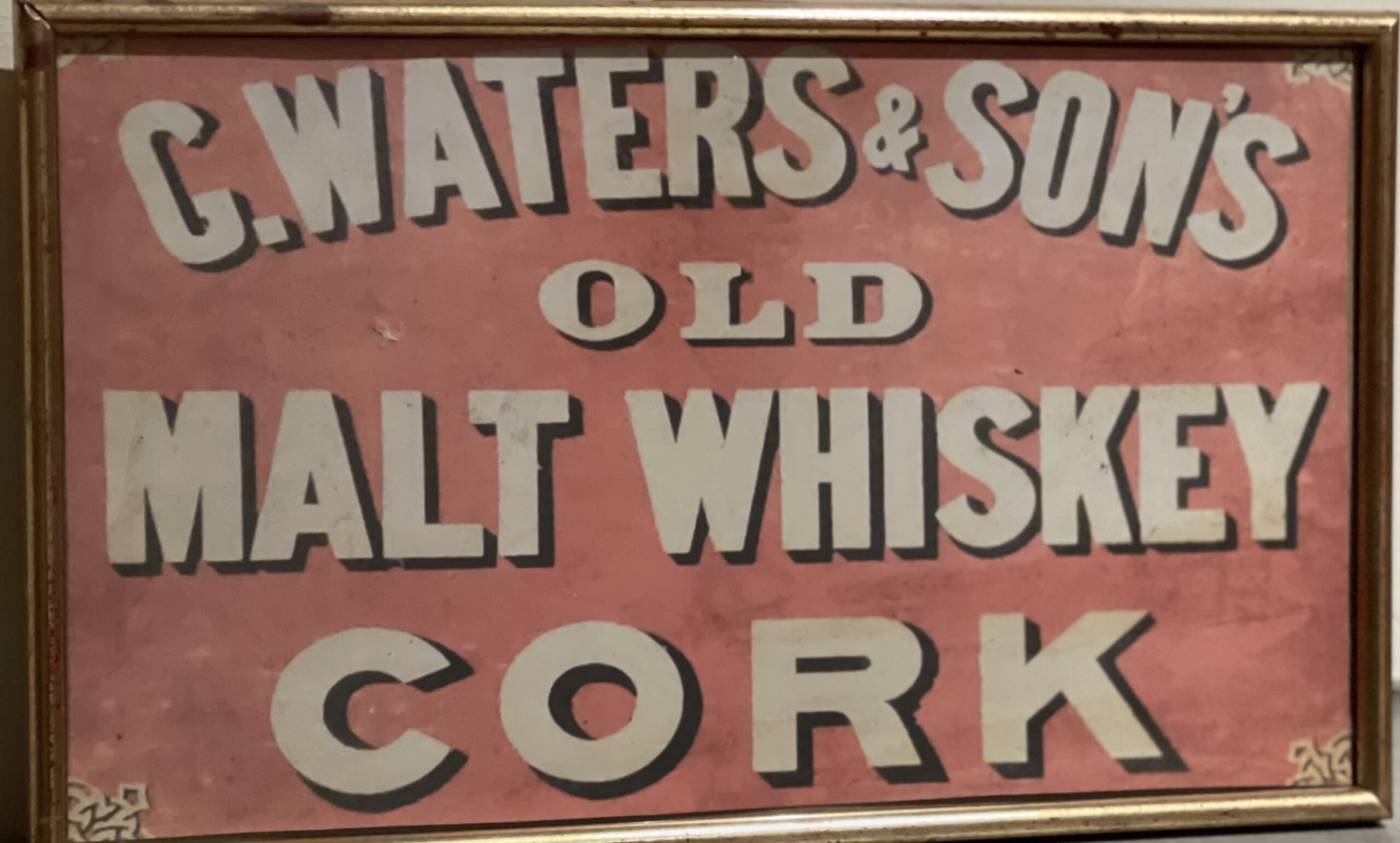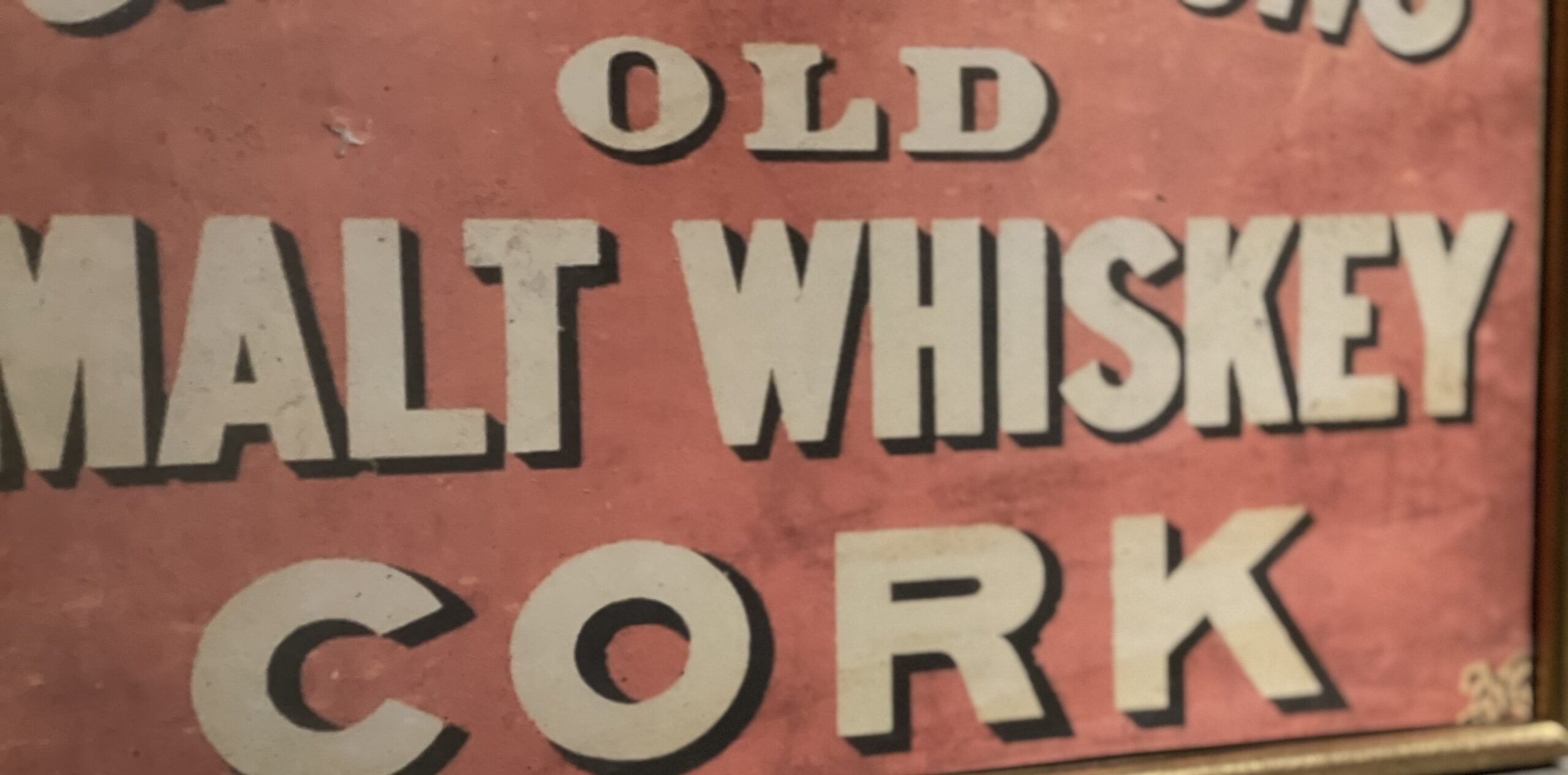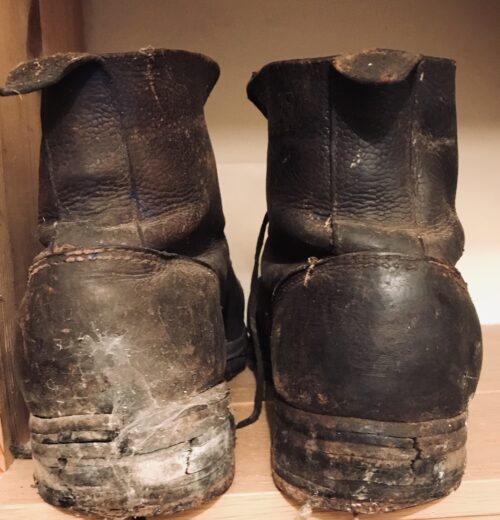24cm x 40cm
The Green Distillery was an Irish whiskey distillery which was established in Cork City, Ireland in 1796. In 1867, the distillery was purchased by the Cork Distilleries Company (CDC), in an amalgamation of five Cork distilleries.Production of whiskey at the distillery likely ceased soon afters its acquisition by the CDC.However, the distillery is known to have remained in use a bonded store by the Cork Distilleries Company for several years thereafter.In the mid-twentieth century, the distillery resumed operations as a gin distillery for a period of time, however, it has since been almost completely demolished.
The distillery was notable for its use of an early continuous distillation apparatus, invented by the distillery’s then co-owner, Joseph Shee.
The distillery began life on 12 May 1796, when two distillers, Robert Allan and Denis Corcoran purchased a dwelling house and maltings on North York Street (now Thomas Davis Street) from Bartholomew Foley, a draper. The malthouse had formerly been owned by Thomas Wood, a maltster, in 1780. In 1802, the Allan and Corcoran are recorded as working a 762 gallon still. In the years that followed, the distillery seems to have changed hands several times. Around 1812, the business was being run by two brothers, Thomas and Joseph Shee, Benjamin Hodges, and some others.Thomas Shee acted as the distiller working a 201 gallon still, while Joseph acted a marketing agent based in London.Hodges and the others may have been silent partners who provided capital but nothing else, as their connection with the distillery soon disappeared. Output was recorded at 100,000 gallons in 1828.In June 1830, the Shees entered financial difficulties, and ownership passed to Joseph Shee. Joseph continued operations using capital provided by James Kiernan under a mortgage, while Thomas Shee remained on as a distiller.In 1833, excise records show that the distillery paid a duty charge of £26,716, which equated to about 160,000 gallons proof.By 1835, Kiernan took outright control of the distillery. When Kiernan died in December 1844, his will specified that the distillery should be put up for sale. It was purchased on 27 July 1845 by George Waters, who was previously a co-owner of Daly’s Distillery on John Street, until the dissolution of the partnership following the death of one of the partners.
Waters ran the distillery until his retirement around 1867, after which the distillery was purchased by the Cork Distilleries Company (CDC), in an amalgamation of five Cork distilleries. Under CDC, distilling ceased at the distillery in the 1880s, with production transferred to their nearby North Mall distillery. Subsequently, the Green Distillery was used as a bonded store for some time.However, in the mid-twentieth century, new equipment was installed in the Green Distillery, with production of gin occurring there for a period of time.
According to Irish Distillers, who absorbed the Cork Distilleries Company in the 1960s, a warehouse on the site was used to store whiskey in bond until the 1980s.Since then, the distillery has been almost completely demolished, with only a small archway remaining. However, one of original pot stills is still in use, currently employed as an experimental still at the nearby New Midleton Distillery.
Notability
The distillery was home to an early continuous distillation apparatus, was which installed and used at the distillery for almost twenty years. The apparatus, which the distiller’s co-owner, Joseph Shee, patented in 1834, was similar to Jean‐Édouard Adam’s 1801 design, and consisted of a four pot stills connected in series. Though thought to have been effective, the apparatus was not widely adopted. In particular, as a more efficient apparatus, the Coffey Still was patented by another Irish distiller, Aeneas Coffey, in 1830.
Daly’s Distillery was an Irish whiskey distillery which operated in Cork City, Ireland from around 1820 to 1869. In 1867, the distillery was purchased by the Cork Distilleries Company (CDC), in an amalgamation of five cork distilleries. Two years later, in 1869, as the smallest CDC distillery, Daly’s Distillery ceased operations. In the years that followed its closure, some of the buildings became part of Shaw’s Flour Mill, and Murphy’s Brewery, with others continuing to be used as warehouses by Cork Distilleries Company for several years (though information is difficult to come by, their continued existence is mentioned in Alfred Barnard‘s 1887 account of the distilleries of the United Kingdom).
History
In 1798, the firm of James Daly & Co. was established as a rectifying distillery and wine merchants at a premises on Blarney St., Cork. In 1820, this was relocated to 32 John Street.As some sources state that the John distillery was established in 1807, and it is known that a William Lyons ran a distillery on John Street in the early 1800s, it is possible that Daly purchased an existing distillery on John Street.
In 1822, James Daly’s nephew John Murray joined the partnership. In 1828, the distillery is reported to have an output of 87,874 gallons of spirit.However, in 1833, output of only 39,000 gallons per annum was reported, which was low compared with some of the Irish distillers of the era; for instance, at that time Murphy’s Distillery in nearby Midleton, had an output of over 400,000 gallons per annum.
On James Daly’s death, in 1850, the partnership, which at that point had consisted of James Daly, Maurice Murray (John Murray’s son) and George Waters, was dissolved, with Maurice Murray taking sole ownership of the distillery, which continued to trade as James Daly & Co. After leaving the partnership, George Waters went on to purchase and run the nearby Green distillery.
In 1853, Murray rebuilt and significantly extended the distillery, expanding onto neighbouring streets. By the late 1860s, the distillery had grown to occupy 3 acres, consisting of a brewhouse, distillery and maltings on John Street; granaries on Leitrim Street; and eight bonded warehouses scattered across John Street, Leitrim Street and Watercourse Road.According to accounts from the time, whiskey from the distillery, some of which was aged for seven years or more, was mainly exported “to the colonies”.In particular, it was said that in Australia the whiskey sold at a premium to other whiskeys.
A well respected member of the Irish distilling industry at the time, the distillery’s owner Maurice Murray, conducted significant correspondence with William Ewart Gladstone, the then British Chancellor of the Exchequer, on behalf of the Irish distillers, with regard to the duties placed on Irish whiskey.
In 1867, Daly’s Distillery, was absorbed into Cork Distilleries Company (CDC), in an amalgamation of five Cork distilleries. As the smallest of the five distilleries, Daly’s closed soon after the amalgamation, in 1869. Following its closure, Maurice Murray is known to have continued to work for the CDC at the North Mall Distillery, along with his son Daly Murray.
The main distillery buildings later became part of Shaw’s Flour Mill, while other buildings were incorporated into the nearby Murphy’s Brewery, which was run by relatives of James Murphy of the Midleton Distillery, who was the driving force behind the establishment of the Cork Distilleries Company. One of the distillery buildings, now named “the Mill”, is still visible on 32 Lower John Street, Cork.












